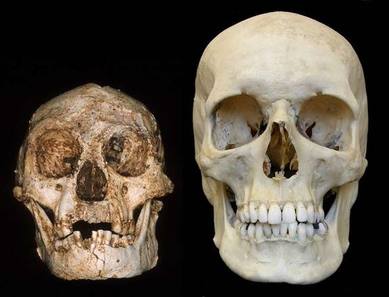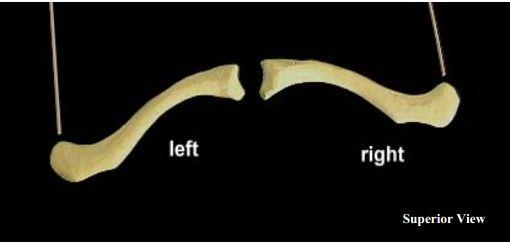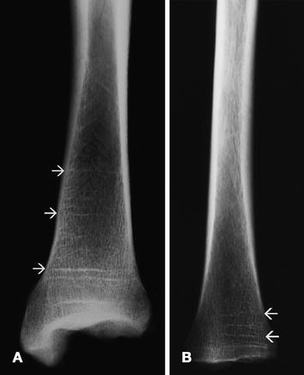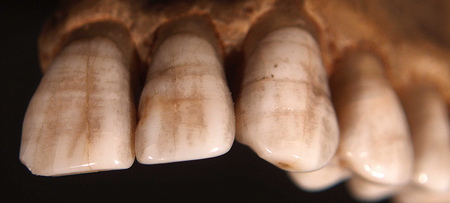No, these are not the mythical creatures of Tolkien, the hobbits I will speak of lived amoung us. Even though they were given the nickname “hobbit,” their scientific name is Homo floresiensis. This species of hominid was found not too long ago, in late 2004. The discovery was by luck. What I mean by this is that the ones who found Flo (nickname to the individual whose “full name” is “Little Lady of Flores”), were actually looking for evidence of Homo erectus on Flores (an island of Indonesia), but in finding Flo, they found it. Reason being it is theorized that the predecessors of H. floresiensis was most likely H. erectus.
What made this find interesting is the height of Flo, and most likely her people. H. floresiensis is estimated to have measured 3 ft 5 in (106 cm), and estimated weight of 66 lbs (30 kg). Because only one nearly full skeleton of this species has been found it has been a subject of controversy to label her people as a different species and that she most likely suffered from dwarfism, but those who think this has declined over time (especially since there have been bones and teeth found of as many as 12 H. floresiensis).
Now, having an entire species with a small stature seems to be something out of Gulliver's Travels (they were not that small but just to illustrate a point), but there is an evolutionary reason. Reason being there is an evolutionary process named “island dwarfism” “that results from long-term isolation on a small island with limited food resources and a lack of predators.” H. floresiensis is not the only example of this process, there have been findings of pygmy elephants, also found on Flores. That said, there is a number of scientists that are considering the possibility of H. floresiensis being small when they reached Flores.
Even though this species had a small brain size, (volume of 380 cm3 or 23 cu in, that is in the range of chimpanzees or australopithecines), there have been stone tools found in areas with the bones. However, H. floresiensis is not the only small hominid found. Another by the name of Ardipithecus ramidus (or Ardi), measured, at least the female measured, an average of 3 ft 11 in (120 cm) and weighed an average 110 lbs (50 kg). Although, while Ardi lived about 4.4 million years ago, Flo lived about 100,000 – 50,000. With that in mind, we,Homo sapiens, that have lived since about 200,000 years ago, have lived amoungst hobbits.
Well, I truly think that was a very fun fact...albeit kind of sad to think we will never meet a living hobbit. If you have an itching to get to the bottom of a small fact that has been festering in your mind, or if you have a blog topic you would like me to cover, or if you would just like to express your thoughts on this first Fun Fact Friday, please feel free to comment below.
What made this find interesting is the height of Flo, and most likely her people. H. floresiensis is estimated to have measured 3 ft 5 in (106 cm), and estimated weight of 66 lbs (30 kg). Because only one nearly full skeleton of this species has been found it has been a subject of controversy to label her people as a different species and that she most likely suffered from dwarfism, but those who think this has declined over time (especially since there have been bones and teeth found of as many as 12 H. floresiensis).
Now, having an entire species with a small stature seems to be something out of Gulliver's Travels (they were not that small but just to illustrate a point), but there is an evolutionary reason. Reason being there is an evolutionary process named “island dwarfism” “that results from long-term isolation on a small island with limited food resources and a lack of predators.” H. floresiensis is not the only example of this process, there have been findings of pygmy elephants, also found on Flores. That said, there is a number of scientists that are considering the possibility of H. floresiensis being small when they reached Flores.
Even though this species had a small brain size, (volume of 380 cm3 or 23 cu in, that is in the range of chimpanzees or australopithecines), there have been stone tools found in areas with the bones. However, H. floresiensis is not the only small hominid found. Another by the name of Ardipithecus ramidus (or Ardi), measured, at least the female measured, an average of 3 ft 11 in (120 cm) and weighed an average 110 lbs (50 kg). Although, while Ardi lived about 4.4 million years ago, Flo lived about 100,000 – 50,000. With that in mind, we,Homo sapiens, that have lived since about 200,000 years ago, have lived amoungst hobbits.
Well, I truly think that was a very fun fact...albeit kind of sad to think we will never meet a living hobbit. If you have an itching to get to the bottom of a small fact that has been festering in your mind, or if you have a blog topic you would like me to cover, or if you would just like to express your thoughts on this first Fun Fact Friday, please feel free to comment below.
(H. floresiensis skull on left, modern human skull on right)




 RSS Feed
RSS Feed
